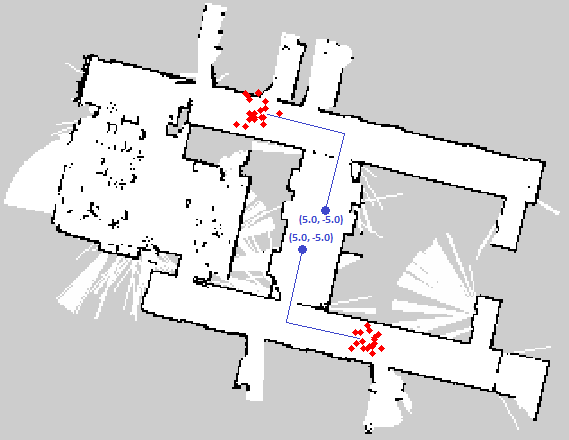Robotic exploration for mapping and change detection

| Leitung: | Brenner, Paffenholz |
| Team: | Sebastian Gangl |
| Jahr: | 2014 |
| Laufzeit: | 2014 |
| Ist abgeschlossen: | ja |
Robotic exploration for mapping and change detection
Autonomous systems and mobile robots become more and more part of our daily life. Examples are cutting the grass in the garden, helping us to get into a parking lot or cleaning the floor.
The problems of localization, perception and automatic model building (e.g. maps) are central questions in mobile robotics. How to determine the absolute pose of a robot? What is the best way to explore an a priori unknown environment? Can changes be detected?
The exploration problem can be formulated as follows. Given the current knowledge of the world, where should a robot move to gain as much new information as possible? This problem can be distinguished into two cases:
- Active localization, maximizing the information about the robot’s current pose, and
- Active exploration, maximizing the information about the a priori unknown environment.
Active localization
Active localization consists of two sub-problems: global localization and active navigation. In this thesis, all algorithms were implemented within the framework of the robot operating system (ROS). For global localization, the adaptive Monte Carlo Localization (AMCL) node was used, whereas active navigation relied on a greedy entropy based algorithm. This algorithm computes the expected information gain for a variety of possible actions and then performs the action which leads to the best score, defined as the information gain minus the cost of the respective action. The algorithm for active localization works if only a few particle clusters remain. This indicates that the algorithm should start with random movements until the number of clusters is sufficiently reduced.
Active Exploration
The case of active exploration contributes the problem of sensor placement. Different strategies are available. In this thesis, a frontier-based and an information gain-based approach as well as a strategy similar to the next-best-view problem in computer graphics are compared. Further, the frontier-based approach was implemented and evaluated. In a first step, the Gazebo environment was used to perform a complete simulation, using 3D models of the IKG floor and the Volksbot robot. Then, the method was shown to work on the robot. As shown in a live demonstration, this algorithm is suitable to perform active exploration of the environment in real time.










